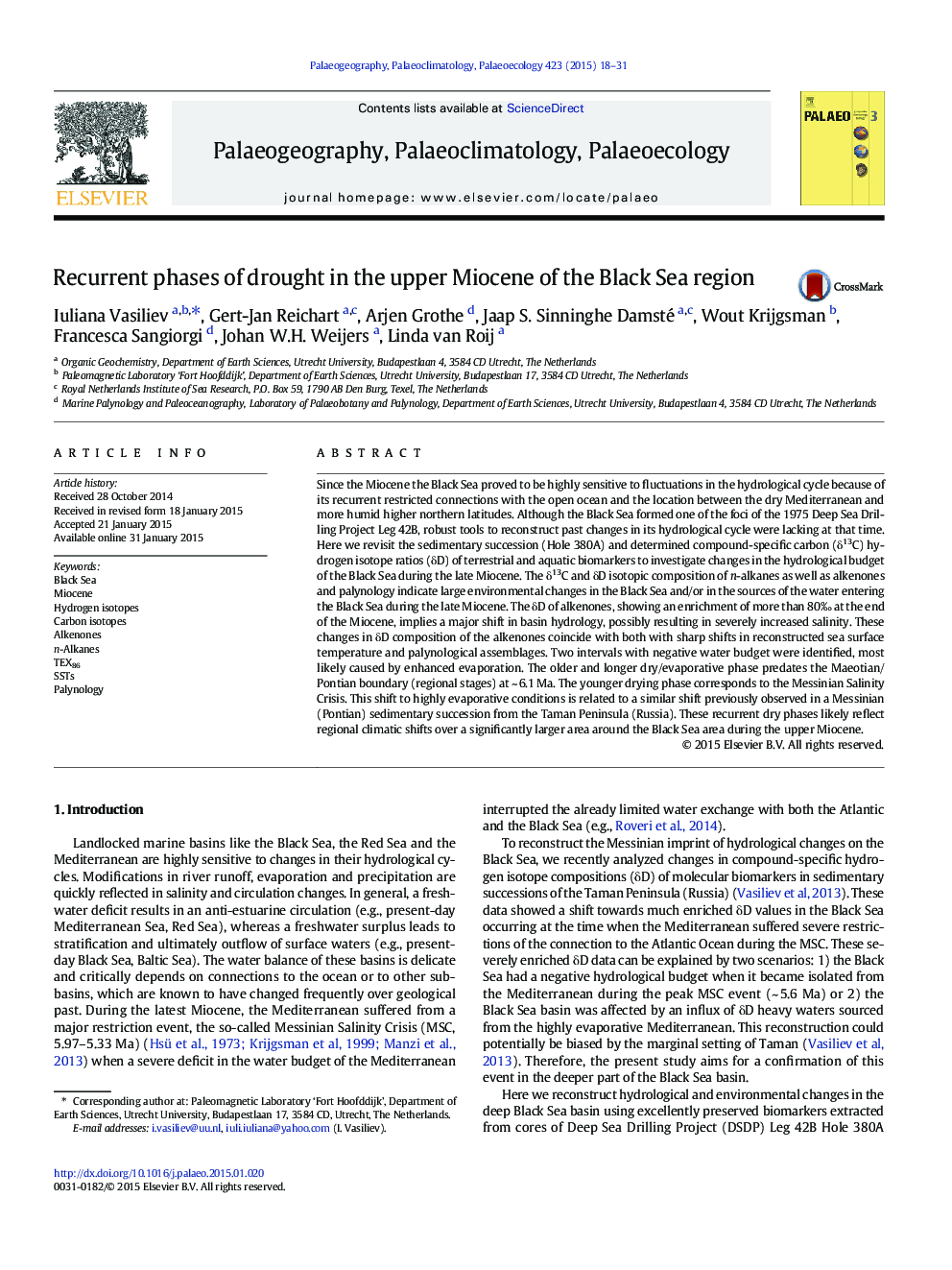| کد مقاله | کد نشریه | سال انتشار | مقاله انگلیسی | نسخه تمام متن |
|---|---|---|---|---|
| 4466037 | 1622167 | 2015 | 14 صفحه PDF | دانلود رایگان |
• ΔD from the Black Sea show rapid changes to evaporitic conditions during upper Miocene.
• 80‰ enrichment in δD values of alkenones
• SSTs of long chain n-alkanes indicate river water from colder latitudes.
• The Black Sea had strong negative hydrological budget.
Since the Miocene the Black Sea proved to be highly sensitive to fluctuations in the hydrological cycle because of its recurrent restricted connections with the open ocean and the location between the dry Mediterranean and more humid higher northern latitudes. Although the Black Sea formed one of the foci of the 1975 Deep Sea Drilling Project Leg 42B, robust tools to reconstruct past changes in its hydrological cycle were lacking at that time. Here we revisit the sedimentary succession (Hole 380A) and determined compound-specific carbon (δ13C) hydrogen isotope ratios (δD) of terrestrial and aquatic biomarkers to investigate changes in the hydrological budget of the Black Sea during the late Miocene. The δ13C and δD isotopic composition of n-alkanes as well as alkenones and palynology indicate large environmental changes in the Black Sea and/or in the sources of the water entering the Black Sea during the late Miocene. The δD of alkenones, showing an enrichment of more than 80‰ at the end of the Miocene, implies a major shift in basin hydrology, possibly resulting in severely increased salinity. These changes in δD composition of the alkenones coincide with both with sharp shifts in reconstructed sea surface temperature and palynological assemblages. Two intervals with negative water budget were identified, most likely caused by enhanced evaporation. The older and longer dry/evaporative phase predates the Maeotian/Pontian boundary (regional stages) at ~ 6.1 Ma. The younger drying phase corresponds to the Messinian Salinity Crisis. This shift to highly evaporative conditions is related to a similar shift previously observed in a Messinian (Pontian) sedimentary succession from the Taman Peninsula (Russia). These recurrent dry phases likely reflect regional climatic shifts over a significantly larger area around the Black Sea area during the upper Miocene.
Figure optionsDownload high-quality image (274 K)Download as PowerPoint slide
Journal: Palaeogeography, Palaeoclimatology, Palaeoecology - Volume 423, 1 April 2015, Pages 18–31
